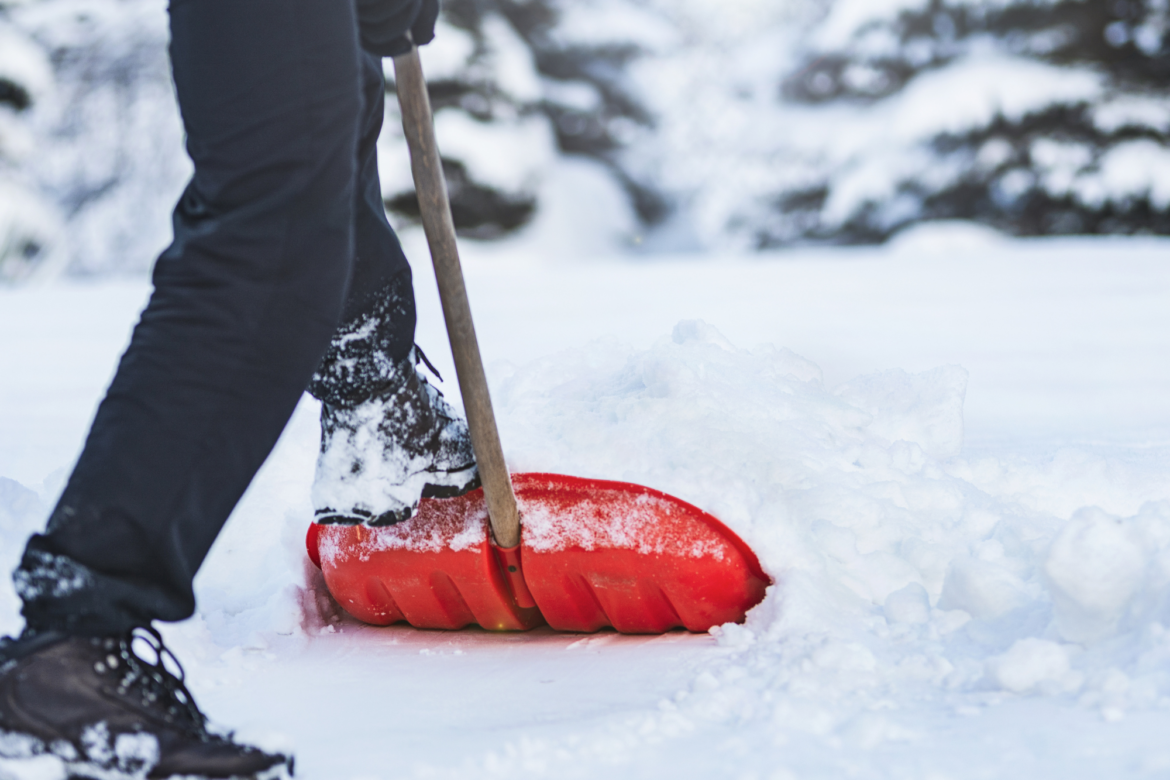Exercise Today to Stay Safe Shoveling Snow Tomorrow!
As the weather gets colder, fall becomes winter, and rain becomes snow. That means, eventually, we will have to get off our cozy couch with our warm hot chocolate, coffee, or tea to bundle up, venture outside, and start the annual task of clearing snow. If you are like me, you much prefer the days when you are not the one responsible for helping to clear the snow. I miss the days of living in my college apartment and just marveling at the beauty of the fresh snow. Now, I view it as my forced workout for the day. As much as I enjoy working out, I would much prefer working out inside where I have at least some say in climate control. Perhaps you too view shoveling as a chore that must be done. Exercise today to stay safe shoveling snow tomorrow.
Shoveling is a cardiovascular workout
Did you know, that shoveling is a significant workout for our cardiovascular system? The demands placed on the body’s cardiovascular system increase drastically when shoveling. This means that your heart has to beat faster and has to work harder to pump blood around your body. This can put extra strain on the heart and can be dangerous to individuals who do not exercise regularly as their heart is not prepared to handle the new workload. One alternative to shoveling is snow blowing, which has been shown to keep oxygen demand and heart rates lower.4
What can you do?
To keep you safe this winter, you must participate in regular cardiovascular exercise. This can be indoor or outdoor for you cold lovers, and includes activities like walking on a treadmill, high-intensity interval training, biking, running, swimming, Zumba, chair aerobics, and cardio exercise videos to name a few! The options are endless! What is important is that you start moving your body to ensure you stay safe this winter. Any form of exercise that increases your heart rate will help keep you safe this winter.
How long do I need to exercise for?
Your next question may be: how do you know how much exercise to do? The American College of Sports Medicine recommends healthy adults should participate in moderate-intensity exercise for a minimum of 30 minutes 5 days a week or vigorous exercise for a minimum of 20 minutes 3 days a week.1 You should also try to participate in strength training twice a week to keep your muscles and bones strong! This will also make it a lot easier to lift your shovel and throw that snow off your driveway or sidewalk.
As with all forms of exercise, please consult a healthcare professional before beginning a new workout. All of the therapists at Freedom Physical Therapy Services are always happy to help you form an exercise program that meets your needs and keeps you healthy.
References
1. American College of Sports Medicine Physical Activity Guidelines
2. Franklin BA, et al. “Cardiac demands of heavy snow shoveling.” JAMA. March 15, 1995.
3. Nichols RB, et al. “Snow-shoveling and the risk of acute coronary syndromes.” Clin Res Cardiol. Jan 2012.
4. Sheldahl LM, et al. “Snow blowing and shoveling in normal and asymptomatic coronary artery diseased men.” Int J Cardiol. March 1, 1994.

